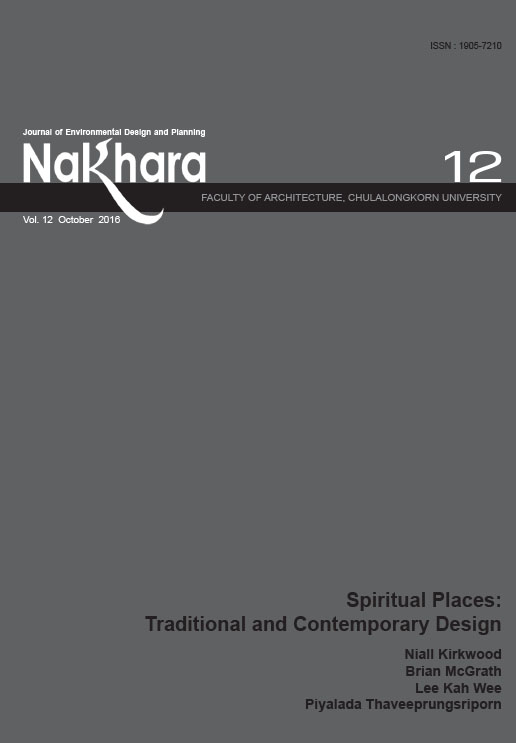Spiritual Transformation and Inculturation as a Key to the Understanding of Sacred Architecture: Case Study of Wooden Church Heritages in the Northeast of Thailand
Main Article Content
Abstract
This paper is an exploration of key concepts to understanding sacred architecture. The first part of this article is divided into three topics; the first studies the meaning and anatomy of the sacred. The second topic is the concept of spiritual transformation as a key to understanding what sacred architecture represents. The third topic discusses the concept of inculturation as another key concept to understand how the sacred is manifested in the world.
In the second part of the article there are analyses of wooden churches that belong to the decades-old Christian community in northeast Thailand and their heritages. The analysis of both cases will show how spiritual transformation occurs from an urban scale to a building scale, and how the cultural context can solidify the form of architecture and what it meant to the communities.
Article Details
References
Chantarasunee, J. (Interviewee). (2014, December). The secretary of the Nabua Church.
Dhiravamsa. (2012). Nirvana Upside Down. n.p.: Wisdom Moon Publishing.
Eliade, M. (1987). The sacred and the profane: the nature of religion. San Diego: Harcourt Brace & Company.
Encyclopedia Brittanica. Mysterium tremendum et fascinans Retrieved from: https://global.britannica. com/topic/mysterium-tremendum-et-fascinans
International Theological Commision. (1988). Faith and Inculturation. Retrieved from https://www.vatican. va/roman_curia/congregations/cfaith/cti_documents/rc_cti_1988_fede-inculturazione_en.html [2016, May 29]
Jones, L. (2000). The hermeneutics of sacred architecture: experience, interpretation, comparison, vol.2. Cambridge: Harvard University Press.
Otto, R. (1923). The Idea of the Holy (W. John,Trans.). London: Oxford University Press.
Phromsenan, B. (Interviewee). (2009, July). The abbot of Songyae Church.
Roberts, N. W. (2004). Building type basic for places of worship. New Jersey: John Wiley & Sons.
Shorter, A. (1988). Toward a theology of inculturation. New York, NY.: Maryknoll.
Sonderblom, N. (1913). Holiness (General and Primitive). In James Hasting (Ed.), Encyclopaedia of Religion and Ethics vol.6. Edinburg: T&T Clark.
Xinjiang, R. (2004, July). Land route or sea route? commentary on the study of the paths of transmission and Areas in which Buddhism Was Disseminated during the Han Period. Sino-Platonic Papers 144, 26-27.

